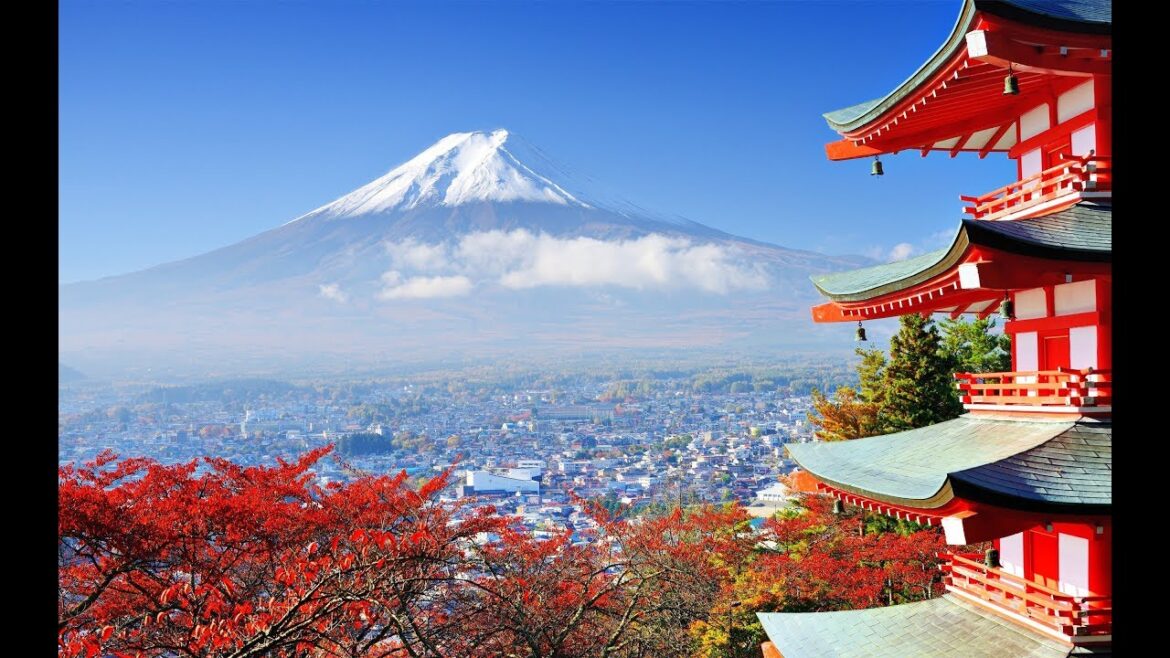Best tourist attractions in japan
Text: https://goo.gl/ikQ1bg
1. Mount Fuji: Without a doubt Japan’s most recognizable landmark, majestic Mount Fuji (Fuji-san) is also the country’s highest mountain peak, towering 3,776 meters over an otherwise largely flat landscape to the south and east, tall enough to be seen from Tokyo more than 100 kilometers away. Mount Fuji has for centuries been celebrated in art and literature, and is now considered so important an icon that UNESCO recognized its world cultural significance in 2013. Part of the Fuji-Hakone-Izu National Park, Mount Fuji is climbed by more than a million people each summer as an act of pilgrimage that culminates in watching the sunrise from its summit.
2. Imperial Tokyo: Tokyo’s most famous landmark, the Imperial Palace, with its beautiful 17th-century parks surrounded by walls and moats, is a must-see when visiting the nation’s capital. Don’t be put off by the fact that the majority of the palace is closed to the public (it’s still in use by the Imperial family), as there is still enough to see simply by strolling the grounds. In addition to the many fine views of the palace from numerous points in the surrounding parkland – including the famous Nijubashi Bridge, or “double bridge,” so named for its watery reflection – visitors are permitted into the East Higashi-Gyoen Garden, one of the few areas open to the public.
3. Hiroshima Peace Memorial Park: While little need be said here of the horrors of the atomic bombing of Hiroshima in August 1945, much can be said of the incredible efforts this vibrant city has made to commemorate the many victims of the world’s first nuclear attack, and perhaps even more importantly, the symbol of lasting peace Hiroshima has since become. Visited by more than a million people each year, many from overseas, Hiroshima Peace Memorial Park (Hiroshima Heiwa Kinen Koen) lies at the epicenter of the atomic blast in what was once a bustling part of the city and includes a number of important monuments, memorials, and museums relating to the events of that fateful day.
4. Historic Kyoto: One of Japan’s most visited cities, lovely Kyoto – one of the few cities in the country to be spared the devastation of WWII – attracts more than 10 million visitors annually to explore its fine old streets and architecture, much of it unchanged since the Imperial family took up residence here more than 1,000 years ago. Even then, the city was Japan’s most important cultural center, a legacy that continues with its many museums and art galleries, each bursting with important sculptures, paintings, and other art forms.
5. The Island Shrine of Itsukushima: Just a short ferry ride from mainland Hiroshima is the island of Miyajima, famous the world over as Japan’s Shrine Island. Covering an area of 30 square kilometers in Hiroshima Bay, Miyajima is best known as the home of the Itsukushima Shrine, a Shinto temple dedicated to the Princess daughters of the wind god Susanoo. Dating from the eighth century, the majority of the shrine’s buildings rise out of the waters of a small bay supported only by piles. The effect at high tide is simply stunning, making these structures – including the famous Great Floating Gate (O-Torii) – appear as if they’re floating on water. Linked together by walkways and bridges, it’s a fascinating place to explore, in particular its larger halls such as the exquisite Honden (Main Hall), the Offerings Hall (Heiden), the Prayer Hall (Haiden), and the Hall of a Thousand Mats (Senjokaku).

